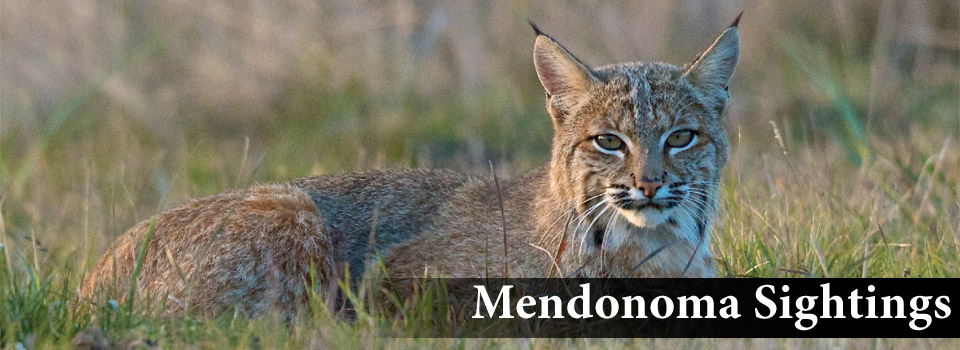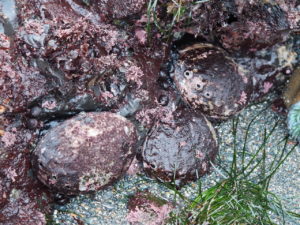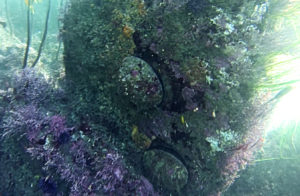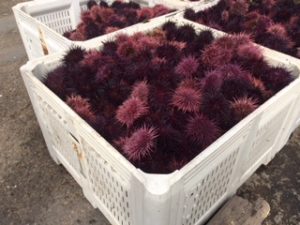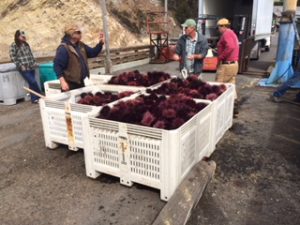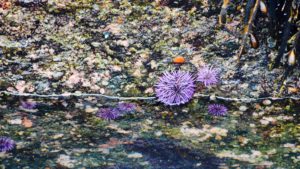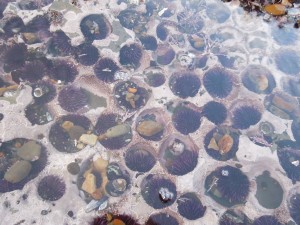Abalones are struggling. The voracious Purple Sea Urchins are eating the Abalones' food source, which is kelp. To survive, Abalones have moved closer to shore, which brings problems for them too. But the Urchins can't survive in the wave action, so the Abalones have a measure of safety there - unless big surf knocks them up on the beach. Marilyn Green recently photographed a group of them during a recent low tide.
We see signs of imbalance in the ocean. And we also see signs of balance returning, like seeing more Sea Stars. We will continue to watch and learn.
Thanks to Marilyn for allowing me to share her photo with you here.
Today is a rainbow day, and tomorrow brings a big storm for late in the day. As I type this, I can see a storm cloud on the ocean, dark with rain, and headed my way! Not a good time to take a walk.
